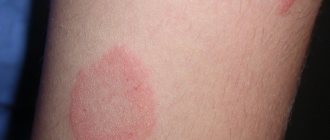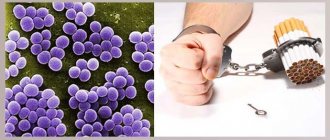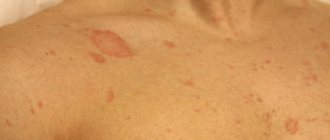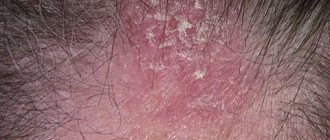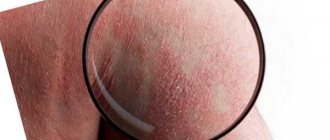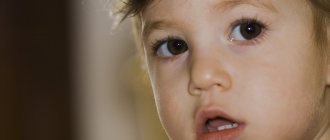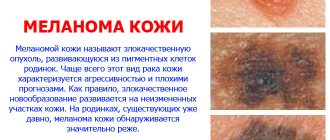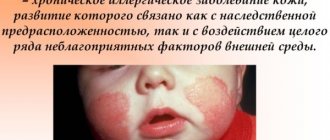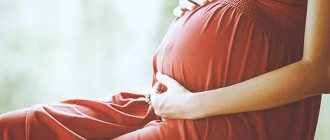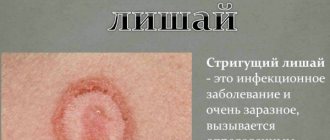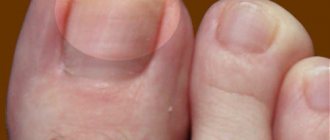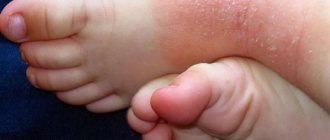( 1 ratings, average: 5.00 out of 5)
Home » Allergies (rash)
What does lichen look like in humans? What are the types of this disease? How to treat? Readers can find answers to these and other questions in this article.
Ringworm is an infectious skin disease characterized by the appearance of flaky and itchy spots on the body. As doctors note, people with weak immune systems are at risk. Moreover, such a “gift” can be received both from an animal and from an already ill person.
What is lichen in humans, types of disease
The correct treatment can be determined by characteristic signs. The photo shows some types of lichen. Usually one zone or several are affected. All types of lichen are united by one common symptom: the appearance of a rash, itching, peeling. Each type has its own symptoms and reasons for its occurrence.
Different forms of the disease differ in that some of them lead to complications. Under certain circumstances, the infection can be transmitted from a sick person to a healthy person. The type of disease depends on the pathogen, which is directly related to the incubation period.
For example, the symptoms of ringworm are detected after a few weeks, and microscopy, transferred from an animal, after 6 days. Very often, the disease manifests itself in people with weak immunity, exposed to stress, after a serious illness. Children are also at risk.
Defining manifestations of lichen:
- Skin changes color in limited areas;
- The appearance of itching, peeling.
What does lichen look like in humans: stages and photos
Viruses and three types of fungi are the main sources of lichen. The virus can remain in the human body for some time and manifest itself when the defenses are reduced.
These include herpes - rashes are possible throughout the body:
- On the back there are pink spots, growing around them, light formations appear;
- Chest area – white and pink spots are characteristic;
- Feet are susceptible to all types;
- Dark and light spots of various shapes appear on the hands, and itching occurs.
There are three types of mushrooms:
- Zooanthropophilic species live in the animal's fur and skin;
- Human skin serves as a habitat for anthropophilic species;
- The soil contains geophilic fungi.
How to diagnose lichen on the face?
For an accurate diagnosis, when the first rash appears on the face, you should consult a dermatologist. The doctor will conduct the necessary laboratory tests and determine the pathology that has affected the skin.
Lichen is diagnosed using various methods, including:
- taking anamnesis;
- inspection of damaged areas;
- laboratory tests: blood test, scraping, culture;
- Balser iodine test;
- Wood's lamp.
The first symptoms and signs of lichen in children and adults
Any type of lichen at the first stage has a number of identical symptoms.
In adults:
- Inflammation in the affected areas;
- A rash with defined boundaries between the diseased and healthy areas;
- Change in skin color, itching, flaking, dryness.
Ringworm, shingles and rosacea are contagious. Contacts should be limited during this period.
Initial symptoms in children:
- Legs, hips, shoulders, and abdomen are affected;
- Pale pink spots, peeling;
- Sometimes inflammation of the lymph nodes with elevated temperature is possible.
If treatment is started at the initial signs of the disease, the person’s lichen disappears after 1-2 weeks. The photo shows the first skin lesions.
Types and symptoms of lichen
There are 5 types of lichen in total, and they all differ in their symptoms, possible complications and places of occurrence of the affected areas:
- Color. This type belongs to fungal lichen diseases. The main symptoms are the appearance of dark pink spots on the body, which, when mechanically damaged, begin to peel off with white scales. Most often it occurs on the face and limbs.
- Flat red. This species is often found on the human mucosa, lips and face. Visually, it looks like pale warts; if timely treatment is not started, they can burst and become ulcers.
- Pink. This type belongs to the group of viral lichen; its occurrence is difficult to determine and diagnose due to its external similarity to an allergic reaction. The main symptoms of the disease are: a small red-pink rash, redness of the affected areas, severe itching, burning and discomfort. Most often, pityriasis rosea occurs on the face in the area of the eyes, nose and forehead.
- Shearer. A fungal subspecies that most often appears in areas of hair on the body (head, chin, intimate area). The affected areas become covered with light pink spots of various shapes; over time, a crust forms in their place. These areas are very itchy and cause a lot of discomfort; hair loss also occurs in this area.
- Scaly. When this type of lichen appears, small red papules appear on the body, which can subsequently develop into large plaques. If treatment is not started in a timely manner, these areas may begin to become rough, dry out, crack and bleed. In this case, the whole process is accompanied by severe pain and itching. Lichen planus can appear anywhere on the body.
The danger and consequences of deprivation in humans
Ringworm is dangerous because there is a possibility of infecting or becoming infected yourself through direct contact. Some types of lichen reduce immunity and hair loss may occur. Allergies may occur. The danger comes from the lichen pathogen from animals. Fungal spores fall on the ground, remain on the animal's bedding, on furniture and can get on human skin.
After treatment, remission is possible during contact with an infectious animal. The treatment is difficult, some rashes disappear, and others appear nearby. If you do not treat superficial lichen, it can turn into chronic.
Pityriasis rosea (lichen of Zhibera)
Experts do not know the reason for the appearance of this type of lichen. The most likely factor is a virus, since the rash appears, most often, after suffering from acute respiratory viral infection or influenza. The disease is seasonal, appearing in spring or autumn. Hypothermia is one of the prerequisites for the occurrence of pityriasis rosea. The spots affect the abdomen, back, and chest.
Symptoms
Itching and peeling occur. Despite its infectious nature, it is impossible to become infected through contact. People with weak immune systems may be at risk of infection, as well as women in the age group from 20 to 40 years. The initial stage is characterized by the appearance of spots 3-5 cm in diameter, with inflamed pink or red edges. gradually turns pale and peels off.
At the next stage, after 1-2 weeks, the rash covers the chest, back, abdomen, limbs, and groin areas. Gradually, the itching remains only on the periphery, the spots turn yellow and disappear. When new spots appear, the patient feels a general malaise, possibly an increase in body temperature, and enlarged lymph nodes in the area of the chin and neck.
Treatment
All signs of the disease disappear after two months.
The following recommendations should be observed:
- Salted, smoked and spicy foods are prohibited. It is undesirable to consume chocolate, strong tea, and coffee. It is necessary to exclude from the menu products that can provoke allergies;
- Limit contact with water, exclude washcloths and hard towels;
- Baths with infusions of chamomile, string, and calendula have a positive effect. The water should be at room temperature;
- Restrictions on the use of cosmetics;
- You must wear loose clothing made of natural fabric;
- Take sedatives;
- Ozone therapy sessions;
- Various antipruritic drugs;
- When connecting secondary therapy, antibacterial agents or antibiotics are prescribed;
Shingles (herpes zoster)
This is what shingles looks like in humans, photo:
The signs and treatment of this type are described below. The source is the bacteria of the varicella zoster virus, which is part of the herpesvirus family . Therefore, in some publications you can read that herpes can be a provocateur of the occurrence of lichen. After recovery, the virus acquires a resting phase and concentrates in the nerve sectors of the spinal cord and cranial cord.
Factors such as hypothermia and low immunity can cause activation of lichen. The first signs: red blisters filled with liquid appear on the skin.
According to statistics, shingles can occur in every fourth person who has had chickenpox. The virus becomes active after 50 years. In recent years, there has been an appearance of this type in young people. Factors include: unfavorable ecology, decreased immunity, high incidence of infectious diseases.
A distinctive characteristic of this type of lichen is the pain that occurs, this is explained by the fact that the virus bacteria are concentrated in the intercostal and other nerve cells. If treatment is not started on time in severe cases, complications may develop in the eyes. In the initial period, pain and severe burning sensations occur at the site of origin of the virus.
Pink spots with bubbles filled with liquid appear.
After 2-2.5 weeks, the bubbles begin to dry out to a crust and gradually disappear. Slight pigmentation disappears over time. If there are no associated complications, then after 2-3 weeks a complete recovery occurs. Despite this, at the first signs you should consult a doctor. If pain occurs, painkillers are prescribed: Ibuprofen, Naproxen, lidocaine gel.
The doctor administers antiviral therapy to help avoid complications. Ringworm is contagious as long as there are blisters of fluid on the body. Once they burst and dry out, the patient is not considered dangerous.
Contagious diseases
If the lichen is caused by fungi or viruses (it cannot be of a bacterial nature), there is a risk of spreading the infection through household contacts. That is why, if itchy spots appear on the body, you should consult a doctor as soon as possible. If the disease is left untreated, problems with the skin and health in general will likely worsen.
Pityriasis versicolor
Traces of pityriasis versicolor
Another name is sun fungus or pityriasis versicolor. The disease is considered harmless to others because it cannot cause serious changes in the functioning of the body. The main problem with this type of lichen is cosmetic - spots of different colors and sizes form on the body, which do not tan in the sun (after lichen, whitish marks remain). In fact, the disease is transmitted from person to person through regular and close bodily contact. Spouses are most easily infected from each other.
Pityriasis versicolor is caused by a fungus that always lives on the skin of the body. Under certain conditions (decreased immunity, metabolic, endocrine diseases) it becomes too much. By rapidly multiplying, the fungus disrupts the functioning of the skin. In particular, melanocyte cells, which are responsible for pigmentation. After the fungus is completely destroyed, pale spots remain in the areas of the lichen. They will be there until the number and activity of melanocytes is restored.
Pityriasis versicolor rash
Pityriasis versicolor appears as pink-brown, red-brown or pale pink shapeless spots on the body. More often they appear in the spring, after profuse sweating. The spots are slightly itchy. Discomfort increases after being in water, as well as when wearing synthetic clothing. Pityriasis rash almost always appears on the chest, neck, back, or armpits.
Ringworm needs to be treated comprehensively - with external medications and tablets. This is necessary for the complete elimination of the pathogen not only from the surface of the skin, but also from the hair follicles, where it usually “hides” until better times. For treatment, antifungal creams or lotions (Clotrimazole, Lamisil, Zalain), shower gels or shampoos (Dermazol, Skin-Cap, Terbinacode, Nizoral) are used. Systemic medications are prescribed by the doctor, taking into account the degree of neglect of the problem and the intensity of the symptoms (Fluconazole, Terbinafine, Isoconazole). For complete treatment, it is preferable to use shampoos. They lather the entire body (including the scalp), leave to act for 5 minutes, then rinse. Treatment lasts 2-3 weeks until the stratum corneum is completely renewed.
Ringworm
This is the name given to trichophytosis and microsporia - fungal skin diseases. You can get infected from an animal or a person. The disease can occur in acute and sluggish (latent) form.
Ringworm
With ringworm, reddish spots appear on the body, surrounded by nodules, crusts or scales. They can increase, multiply, and merge into large elements. When the scalp is affected, local baldness is observed. The shape of the receding hairline is round. The pathogen penetrates the skin, causing inflammation. Getting into its appendages (hair), it provokes thinning and fragility of the latter. Ringworm is called ringworm because, in addition to spots, it causes hair loss. They break off at the follicle itself (which looks like black dots) or right above the skin (leaving behind short gray stumps).
Only mild forms of the disease are treated with external medications. Most often, treatments with iodine and sulfur ointment are prescribed. With lesions of the scalp, there is a high risk of the formation of suppuration and abscesses (pictured). Therefore, the patient is prescribed antifungal drugs internally and externally. For the body, you can use ointments and creams (Sertaconazole, Terbinafine, Ecodax). Shampoos are prescribed for the scalp (Dermazol, Kenazol, Ketozoral).
Ringworm (trichophytia, microsporia)
The source is the pathogens:
- microscopy – carrier cats and dogs, very rarely sick;
- trichophytosis – source: cattle.
Ringworm is dangerous for children's bodies.
How to recognize?
What such lichen looks like in a person can be seen in the photo:
Treatment consists of destroying the causative fungus.
Microscopy, signs:
- Pink or reddish spots appear on the scalp, peeling begins;
- The diameter of such lesions is from 2 to 6 cm;
- The hair begins to break off at a height of 3 mm, the remaining part is covered with fungal spores;
- Spots appear on the skin, the same as on the scalp, but smaller in size. Bubbles appear along the edges and gradually dry out. If the disease drags on, a new ring appears around the first one;
- The appearance of itching in the spot area. Scratching spreads the infection spores to other areas.
Trichophytosis:
- The hair begins to break off at a height of 2-3 mm and at the base, leaving black dots. Long or comma-shaped hair may remain in the affected areas;
- The disease can be diagnosed by microscopic examination.
We treat the disease
The patient must be isolated so as not to infect others. Ointment is applied to the areas of infection. Among the prescribed drugs: sulfur-salicylic acid, iodine, special ointments. The doctor may recommend taking tablets orally at the same time as ointments.
Types of lichen
There are several varieties of lichen:
- shearer;
- pink;
- red flat;
- pityriasis;
- encircling.
Each type has its own distinctive features, symptoms, which are used to make a diagnosis and select treatment. But there are a number of common signs:
- formation of foci, plaques measuring 0.5-6 cm;
- change in skin tone, in particular hypo-, hyperpigmentation;
- fine- or coarse-scaled peeling;
- itching of varying intensity.
The appearance of any symptom is a signal to visit a dermatologist. Some types of lichen can be dangerous and people around the patient will suffer, and only a specialist can warn about this.
Ringworm
Composition and instructions for use of Sebozol shampoo
A severe contagious disease, the foci of which cover not only the legs, but also the skin in any part of the body. Source:
- a sick man;
- domestic/wild animals;
- household items, personal hygiene.
Children of primary and school age are at particular risk. There are two types of ringworm:
- Microsporia. People and animals get sick; the source is unvaccinated cats, dogs, and rabbits. The peak of the disease occurs in summer and autumn. Signs:
- clearly defined lesions with pityriasis-like peeling;
- no itching;
- damage to the hairy and smooth parts of the lower extremities.
Important! If lichen appears on the leg, treatment should be started as quickly as possible, since the lesions quickly spread to the entire body, including the scalp. Using ointments without a doctor’s recommendation is strictly prohibited - many popular formulations only provoke the spread of lesions.
- Trichophytosis. Characteristic symptoms:
- round or oval formations on the smooth part of the limb;
- there is no itching, pain, the lesions do not merge;
- a pityriasis-type peeling appears in the center of the formation;
- the periphery of the lesion is covered with blisters containing purulent contents.
Important! The spread of trichophytosis is hurricane. Moving to the scalp of the leg, the lichen breaks off the hairs, the skin becomes inflamed and smooth with black roots of broken hair. If the disease appears in children during adolescence, boys are cured quite quickly; in girls, in 80% of cases the disease becomes chronic.
The chronic course of ringworm is characterized by poorly defined lesions with flaky skin. The feet, legs and palms of the hands are affected, and deep folds form. Sometimes the nail plates are involved in the disease process. It is difficult to treat lichen in humans; therapy takes several months, and medications are selected taking into account individual characteristics. The healing process should only take place under the supervision of a dermatologist!
Pityriasis rosea (lichen of Zhibera)
This is an allergic pathology that always occurs in a patient with a weakened immune system. Pityriasis rosea is not contagious and is not transmitted by contact. As a rule, the outbreak appears after an infectious disease. First, an oval-shaped maternal plaque with a diameter of up to 2 cm is formed. Pityriasis rosea lives up to its name, as can be seen in the photo - the formation has a light pink color and a scaly, wrinkled center.
After a few days, the lesions spread throughout the limb, and the formations can be small or large, accompanied by severe itching. It is strictly forbidden to scratch the spots; any infection will lead to suppuration of the lesions. Medicine does not yet offer a 100% treatment method; pityriasis rosea requires special skin care and, as a rule, goes away on its own within 4-5 weeks. Sometimes healing takes up to 5-6 months. But a dermatologist will tell you how to reduce itching and alleviate symptoms. A visit to the doctor is a must to prevent the appearance of pityriasis rosea and speed up the healing process.
Lichen planus
Instructions for using Keto Plus shampoo and cheap analogues
Unfortunately, the true cause of the outbreak is still unknown. Most doctors believe that the disease is caused by the production of antibodies against one's own tissues. Therefore, lichen ruber is classified as an autoimmune disease. Treatment of lesions includes many special medications and completely excludes antibiotics and antifungals. You won’t be able to do without consulting a dermatologist, so if you notice symptoms such as:
- flat plaques of very bright color and irregular shape, up to 0.3 cm in size;
- formations quickly merge with each other;
- the surface of the lesions has a waxy sheen;
- if the plaques go away on their own, a zone of lightened skin remains;
- the lesions are very itchy.
Advice! If you are in doubt about which type of lichen, red can be distinguished by wiping the lesion with a cotton swab and vegetable oil. The surface will immediately show lines, white dots - this is a feature of this particular disease, associated with unevenness of the skin.
Treatment tactics are varied; in case of severe illness, corticosteroid drugs are used to prevent the spread of lesions to the mucous membrane of the mouth and nasopharynx. In any case, how to treat an autoimmune disease should be determined by a dermatologist and only after making an accurate diagnosis. Self-medication is strictly prohibited, so as not to transform the disease into a chronic one.
Pityriasis versicolor
This is the name of a chronic fungal skin infection. Yeast-like fungi develop specifically in the lower legs (feet, ankles), but sometimes spread to the thighs and legs. Clear boundaries of formation, dark red or brown color are characteristic of the disease. The skin in the places where the formations appear peels off and is very itchy. The dermis affected by the fungus does not tan in the sun and stands out against the background of healthy skin.
Important! Pityriasis versicolor (varicolored) is a common companion for patients with immunodeficiency or chronic gastrointestinal diseases.
Treatment of the disease is simple; local application of special ointments and antifungal drugs is sufficient. However, therapy should be started as quickly as possible so that the lesions do not spread throughout the body. The duration of therapy is 2-4 weeks, sometimes patients may experience relapses in the spring and summer.
Shingles
The disease is considered viral; the causative agent is the varicella zoster virus. In patients who had chickenpox in childhood, the virus persists in the cells of the spinal cord. The emergence of favorable conditions for development provokes the development of the disease. Characteristic signs are the appearance of vesicular formations with transparent contents, severe itching and pain on palpation.
Important! As a rule, lesions appear on the trunk and face. Rashes on the legs indicate a clearly reduced immunity and the prevalence of pathology throughout the body.
Treatment consists of antiviral therapy, but only after a preliminary examination. In some cases, the disease goes away on its own; within 10-12 days, the lichen itself disappears and leaves no traces.
Pityriasis versicolor (lichen versicolor)
See what lichen versicolor looks like in humans, photo:
The signs and treatment of this non-contagious species will be described in more detail. The source is yeast-like fungi that are dormant on the skin.
Activation occurs under the following factors:
- Weakening of protective functions;
- Heavy sweating, oily skin;
- Prolonged exposure to ultraviolet rays, including solariums;
- Frequent use of antibacterial agents or antibiotics;
- Endocrine system disorder;
- Heredity.
People aged 35-45 years are most vulnerable; contact with a sick person is dangerous for them.
First signs
Spots of a yellowish tint of irregular shape usually appear in the area of the shoulder girdle, on the chest, in the armpits, and on the legs. The skin is peeling. If left untreated, the spots merge into one. Their diameter can reach 10 cm.
Treatment methods
If you start treatment right away, the effect will come very quickly. Antifungal ointments are used for external therapy; Intraconazole capsules are prescribed internally. Doctors recommend the use of special hygiene products that correct the acid-base balance of the skin.
Causes of lichen
What are the causes of lichen? There are a great many of them. Eg:
- allergic reaction to a particular drug;
- all kinds of viruses;
- stress;
- weak immune system;
- heredity;
- metabolic disease;
- dysfunction of the epidermis;
- hyperhidrosis;
- endocrine diseases;
- wounds and microcracks;
- oily skin;
- hypothermia;
- neglect of personal hygiene rules;
- chemotherapy or radiation treatment, etc.
Lichen planus
This species is quite common and is not contagious. Its source has not yet been identified. The provocateur may be an allergic effect or stress. Women aged 50-60 years are especially susceptible to this type of disease. The back of the hands, the front of the lower leg, and the sides of the torso are affected.
These are red papules that change color to purple. White or gray bumps may appear on the mucous membrane.
How to treat
Treatment of lichen planus includes complex therapy. It is recommended to take antihistamines, calcium and sodium thiosulfate. In some forms, antibiotics and immune drugs are taken. It is possible to prescribe ointments with corticosteroids.
How to treat lichen on the face?
Ringworm can appear on the face of both a child and an adult anywhere - on the cheek, forehead, chin, eyebrows, eyes: on the eyelid and under the eye. You can only get rid of the pathology by consulting a doctor - improper self-medication can only aggravate the situation.
Methods for getting rid of lichen depend on the type of pathology affecting the body. Each type of lichen is treated differently, which is why it is so important to diagnose the disease correctly and in a timely manner.
Drug therapy
The main principles of treatment for lichen, characterized by the appearance of red flat plaques, are the elimination of itching, vitamin therapy, physiotherapy and therapeutic and preventive measures against diseases of the gastrointestinal tract.
To eliminate unpleasant symptoms, patients are prescribed medications of the following groups::
- antihistamines : Loratadine, Tavegil; Preparations for the treatment of lichen on the face
- systemic corticosteroids : Prednisolone, Diprospan;
- immunomodulators : “Reaferon”, “Dekaris”;
- ointments with corticosteroids : Celestoderm, Advantan.
To get rid of lichen that occurs in the pityriasis form, experts prescribe topical antifungal drugs. One of the most effective remedies is Exoderil, produced in the form of a gel, cream and solution. The drug should be applied to the affected areas once a day.
However, once the spots disappear, you cannot stop treatment with Exoderil - you need to continue treating the skin for at least two more weeks after the symptoms disappear.
The easiest way is to get rid of shingles, but consulting a doctor in this form of the disease should not be neglected. Considering the viral origin of the disease, experts prescribe Acyclovir, Valacyclovir and other similar drugs to patients.
The oldest and most proven method of therapy is to lubricate the bubble elements with brilliant green.
If the skin of the face is affected by pityriasis rosea, then specific therapy is not used in this case, since the pathology is capable of disappearing on its own within five to eight weeks. To relieve itching, if any, Tavegil, Zyrtec and Loratadine are prescribed.
It is recommended to limit any water treatments , and wearing woolen items and using cosmetic care products should be avoided during treatment. You cannot rub with a washcloth or comb the elements of pityriasis rosea.
Effective folk methods
To get rid of ringworm spots on the face, healers recommend preparing an ointment from two tablespoons of snapdragon flowers and a very small amount of butter.
The resulting thick mass should be applied to the affected areas. To apply compressors, you can boil and chop blueberries, and apply the resulting pulp to your face. A similar effect is achieved by rubbing the affected areas with raisins or prunes twisted in a meat grinder.
Another fairly common and effective recipe for preparing an ointment for treating lichen spots is as follows : boil hop cones, burdock roots and calendula inflorescences in equal proportions, and combine the resulting decoction with petroleum jelly in a ratio of 1 to 2. Distribute the prepared ointment over the sore spots thinly layer several times a day.
Prevention
As you know, any disease is much easier to prevent than to treat.
This is why dermatologists strongly recommend:
- reduce contact with unfamiliar animals;
- avoid prolonged stress;
- strengthen the immune system;
- monitor the state of physical and mental health;
- avoid contact with allergens;
- prevent seasonal diseases;
- regularly take a course of multivitamins;
- avoid insect bites, treat affected areas with antiseptics;
- use medications for excessive sweating;
- treat helminthic infestations;
- promptly eliminate problems with the gastrointestinal tract;
- undergo regular cancer screenings.
Thus, lichen on the face is an extremely unpleasant disease, getting rid of which is closely related to many problems: the duration of the course of therapy, pain as the main symptom, a high risk of complications, and internal complexes about a spoiled appearance.
As a result, the rehabilitation period should consist of restoring not only the physical, but also the moral strength of the body.
Video
In conclusion, I would like to note that spending several days in isolation from others due to lichen on the face is not an easy test, so it is necessary to follow the rules for preventing the disease and do your best to prevent its occurrence.
However, if you still cannot avoid the appearance of lichen spots, you can get rid of the disease at home, the main thing is to first consult with a doctor and agree on the planned therapy.
Ringworm (eczema)
Eczema is a chronic disease accompanied by rashes and itching. The disease is characterized by stages of exacerbation and remission. This type of lichen in humans is very common.
In the photo it looks like this:
Signs are similar to other species. Treatment depends on the form and severity of the eczema. There is an acute stage and a chronic stage.
Symptoms of eczema:
- The appearance of swelling, redness;
- The appearance of bubbles, peeling;
- Weeping, serous crusts;
- Feeling of intense itching in the evening and after contact with water.
How to treat the disease
Treatment should be comprehensive:
- Elimination of the causes that provoked this disease;
- Calcium gluconate, sodium thiosulfate solutions, intravenous calcium chloride and others as prescribed by a doctor;
- Antiallergic drugs;
- B vitamins;
- In severe cases of the disease, hormones may be prescribed;
The doctor prescribes ointments: Borna, Triderm, with ketoconazole, baths with potassium permanganate.
Prevention of lichen
There are many ways to quickly and easily treat lichen on the leg, depending on the type of lichen, but it is much easier to prevent the development of pathology.
To do this, you should adhere to the rules of general hygiene and prevention to prevent the occurrence of lichen.
A person needs to do the following:
- avoid contact with stray animals;
- observe the rules of personal hygiene;
- use only personal clothing;
- try to lead a healthy lifestyle;
- avoid nervous tension;
- take vitamin and mineral complexes.
Especially carefully, these rules must be followed by people with a tendency to lichen in order to prevent relapses.
Ringworm can be eliminated only with timely treatment, without leading the disease to a chronic state. The disease does not pose a threat to life, but the lichen accompanied by itching can cause long-term damage to the human nervous system.
Lichen squamosus (psoriasis)
Squamous lichen affects the elbows and knees - these are the most affected areas.
Signs of lichen
Psoriasis can affect the entire body. This is a chronic disease that may not become active for many years.
The following reasons can provoke:
- Contact with chemicals;
- The presence of streptococcal infection in the body;
- Chronic diseases;
- Taking medications or hormones for a long time;
- Chemotherapy sessions;
- Excessive alcohol consumption.
Can it be cured?
Psoriasis is considered incurable. Treatment consists of eliminating external signs and transitioning the active phase to the remission stage. Often the doctor will not be able to determine the time when the exacerbation will begin. The main component of therapy is the psychological state of a person. The use of sedatives and weak tranquilizers is recommended.
The doctor may prescribe ointments based on corticosteroids; salicylic acid, tar, and sulfur will be good helpers.
Not contagious lichens
There are many reasons for the occurrence of inflamed spots on the skin. The most common are allergic reactions, intoxication, attacks of the dermis (skin) by one’s own immunity. If the disturbed mechanisms return to normal, the rash disappears; if the disturbances are chronic, it remains on the body and progresses.
Pityriasis rosea
Ringworm Zhibera
The second name of the disease is Zhiber's lichen. A disease whose nature has not been established. Doctors doubt between the allergic, viral theory and the specific results of chronic toxins in the body. The causative agent of lichen has not been identified, and spontaneous recovery from it remains a mystery.
The disease begins with the appearance of one (maternal) spot on the body. The element has a round shape, limited along the perimeter by a swollen ridge. The skin in the middle is pink at first, turns yellow over time, peels off slightly, and then returns to normal. As it develops, the spot increases slightly in size. 7-10 days after the first element of the rash appears, new spots appear around it. Color reddish brown or pink. The spots are shapeless. Small, prone to merging, forming bizarre patterns on the body. In the photo you can see mother and daughter spots.
Ringworm on the shoulder
The disease lasts 6-8 weeks. During this time, the spots appear in waves. Without any treatment, Zhiber's lichen disappears on its own. Until healing, it is important to prevent scratching and infection of the wounds with bacteria. To do this, doctors recommend washing carefully, giving up washcloths for a while, avoiding intense sweating, regularly changing your underwear, and wearing only cotton items. The rash may itch, then the patient is prescribed antihistamines (antiallergic) drugs - Cetrin, Suprastin, Tavegil.
Lichen planus
Lichen planus on the arm
A disease of autoimmune nature. More often it develops after infectious diseases (influenza, ARVI), as well as against the background of hormonal changes. The disease is more often detected in women over 35 years of age.
With lichen planus, a specific nodular rash appears on the body. Its elements are red, rise above the skin, and have a flat top. When treating lesions with oil, a mesh pattern is clearly visible on the flat part. The rash most often forms on the hands and forearms, and the inner thighs. In half of the patients, elements also form in the mouth - on the inner surface of the cheeks, palate, and gums. Lichen planus on the mucous membrane can develop in several forms (atrophic, erosive, hypertrophic, bullous). Hence the variability of manifestations - ulcer nodules or large blisters form on the surface of the mucous membrane.
The rash of lichen planus bothers the patient - it itches and hurts. This is triggered by a pronounced inflammatory process in the inner layers of the skin.
Treatment consists of eliminating the causes of the disease. To find them, you should undergo a comprehensive examination. To eliminate discomfort during treatment, hormonal-based ointments and creams are used. They eliminate inflammation and relieve itching. To treat lichen on the mucous membrane, Solcoseryl, Cholisal, and homeopathic ointment Traumeel are prescribed. Treatment takes from 4 months to a year. If no cause can be found, the patient may suffer from lichen for years. Considering the increased risk of malignancy (malignancy) of cells in the affected area, the course of the disease should be monitored by a doctor.
Squamosal lichen
This is what the common people call psoriasis. The disease develops against the background of disturbances in the functioning of the immune system. The trigger can be hormonal imbalances, stress, and regular overwork.
Psoriasis on the elbow
The first elements of the rash often appear on the hands - in the area of the elbow or forearm (pictured). Much less commonly, the disease affects the lower extremities (in the area of the knees), the back (upper part of the shoulder blades, back of the neck). First, a small reddish spot appears on the body. It starts to peel off. The scales are large, silvery-white, easily scraped off with a fingernail, but new ones quickly appear in their place. This is a sign of hyperkeratosis - rapid division of the stratum corneum of the skin, in which dead cells do not have time to be rejected. The spot increases in size, peels off more intensely, and new rash elements appear around it, which quickly increase in size.
As the disease progresses, severe inflammation appears in the plaque area. A red layer is visible under the scales, the rashes itch, hurt, and in some cases the skin cracks. Erosion appears on it. Without proper treatment, symptoms do not subside. In advanced cases, the connective tissue of the joints is affected, and the patient cannot move normally.
Psoriasis should be treated by a doctor. Complex therapy is prescribed, using hormonal (Betaderm, Betasalik, Cutivate), vitamin (Davonex, Radevit), keratolytic (Salicylic ointment, Ureotop), antibacterial (Naftalan, Ichthyol, Vishnevsky), regenerating (Cinovit, Psoricap) agents. They are used according to an individual scheme, combined, and periodically replaced. Treatment lasts for life. In severe cases (with damage to large areas of the body, severe inflammation, involvement of joint tissue), drugs for internal use from the group of chemotherapeutic agents and cytostatics are prescribed.
Ringworm
Eczema
This is the second name for eczema. The disease develops against the background of long-term allergic dermatoses and infectious skin diseases. In fact, any skin disease can transform into eczema. The skin on the hands, forearms, and neck is most often affected. The eczematous rash first appears as blisters, then progresses to peeling. The areas are less covered with scales than with psoriasis. After the bubbles burst, a process of atrophy (thinning) of the skin is observed. It cracks, becomes inflamed, and becomes like tissue paper. The patient suffers from constant itching and pain. The situation is greatly worsened by repeated contact with allergens, injuries and scratches on the hands, or prolonged exposure to water. Then the damage increases, and peeling spreads to previously healthy areas.
Treatment of eczema is complex. Includes sedatives, diet, and spa therapy. It is very important to identify the provocateur of the disease. If you eliminate it from your life, you can significantly reduce the frequency of eczema relapses. Patients with tinea versicolor often suffer from infection of the wounds by bacteria and fungi. To eliminate a secondary infection, drugs with a combined composition (Triderm, Kremgen, Triakutan), healing drugs (Zinc ointment, Dexpanthenol), and regular antiseptic treatments are prescribed.
Piedra (nodular) lichen
This is what lichen nodosum looks like in humans. Photo. Signs.
Ringworm in humans (photo), signs and treatment depend on the type of disease.
The treatment is not complicated. The disease is caused by bacteria and is more common in countries with hot climates. Transmission of infection occurs through hats and combs. Sweating, the presence of oils in the hair, tight bandages, and fur hats contribute to the development of the disease.
Ringworm can affect the outer part without getting inside the hair follicle. Hair does not break or fall out. No inflammatory processes are observed. Piedra comes in white and black varieties. The first affects mainly men.
Treatment
For treatment, 1-2% mercury-salicylic ointment is used. It is rubbed into the hair and roots for 3 days. The next day, wash your hair with tar soap. It is recommended to use Walkinson's ointment. Lichen nodosum in humans, once all the signs are established and with proper treatment, completely disappears. The photo shows what hair susceptible to shingles looks like.
Tablets - review of drugs
For any type, take three types of tablets: immunostimulating, analgesic, antiviral.
For herpes zoster:
- Valtrex – helps destroy the herpes virus. The tablets have a preventive effect on the skin. The package contains 42 tablets of 500 ml, price from 1128 rubles. up to 3000 rub. Great Britain.
- Famvir is an antiviral agent that is active against herpes. Made in Switzerland 10 tablets, 125 mg each, cost from 1425 rubles.
- Acyclovir is a domestic antiviral drug to combat herpes. Pack of 20 pcs. 400 mg each, cost 154 rubles.
For pityriasis versicolor:
- Fluconazole is an effective drug in eliminating infections of the mucous membranes. Made in Russia. Pack of 2 pcs. 150 mg each, price within 60 rubles.
- Nystatin is an antifungal antibiotic. Tablets 100 pcs. 500,000 units each produced in Belarus, price 134 rubles.
- Pimafucin – affects fungi. In the first days, side symptoms (nausea, vomiting) are possible, but they disappear; treatment cannot be interrupted. Made in the Netherlands, 20 pcs. 100 mg each, price 509 rub.
Tablets for pityriasis rosea:
- Cetirizine , a drug of the latest generation, is highly effective against various rashes and relieves allergic inflammation. Country of origin: Macedonia, 20 pcs. 10 mg each cost 97 rubles.
Ringworm:
- Griseofulvin - if you are sensitive to penicillins, take with caution. Not recommended for drivers. Russia, pack of 20 pcs. 125 g each, price 225 rub.
- Lamisil - not recommended for pregnant and nursing mothers, as well as patients with kidney disease. Made in Switzerland, 14 pcs. for 125 g the price is about 2000 rubles.
Tablets for lichen planus:
- Plaquenil has an anti-inflammatory effect. Manufacturer: Spain and Great Britain, 60 pcs. 200 mg each, price from 990 rub. up to 1257 rub.
Ringworm:
- Fulcin is an antifungal antibiotic, an analogue of griseofulvin.
Ointments for lichen
Ointments play a huge role in the treatment of lichen; sometimes they are the most effective way.
For pityriasis rosea:
- Sulfur-tar, sulfur-salicylic have a bactericidal, drying effect. Currently, this ointment can only be found in veterinary clinics.
- Sinaflan - Russian-made ointment costs up to 100 rubles.
For pityriasis versicolor and ringworm:
- Both types are caused by a fungal infection. Therefore, ointments that can fight fungi will be an effective treatment method. These ointments include: Mikoseptin, Mikozoral, Exoderil, Terbinafine, Lamisil. The price of ointments is from 160 rubles. up to 500 rub.
For herpes zoster, the following ointments are used:
- Atsigerin,
- Zovirax,
- Vivorax.
These drugs have antiviral and antiherpetic effects. Herpes is the cause of shingles. Price from 185 rub. up to 250 rub. per tube. To relieve neuralgic pain, Ibuprofen and Ketoprofen ointments are recommended.
For the treatment of lichen planus:
- Advantan – an ointment capable of relieving allergic and inflammatory processes. Made in Germany, a 15 g tube costs 538 rubles.
- Hormonal ointments are effective: prednisolone, hydrocortisone - these are domestic drugs, costing from 15 to 30 rubles. Flumetazol – average price 230 rubles, Triamcionol – price 110 rubles.
When the first signs of lichen appear in a person: itching, peeling, redness, etc. You must immediately consult a doctor and start treatment. The photo shows skin damage by different types of lichen. Different types of disease are characterized by different pathogens. Therapy depends on the correct diagnosis. Doctors are against self-treatment of lichen.
However, there are various folk remedies that have been proven over the years. Each type of lichen requires an individual approach, since pathogens react differently to the components of the drugs.
Prevention measures
Treatment of lichen is a long and unpleasant process, so for those who have a hereditary predisposition, it is better to follow the basic rules for preventing this disease:
- If possible, it is necessary to exclude stressful situations from life.
- Minimum contact with various animals.
- Support the immune system.
- Observe basic rules of personal hygiene.
- Take vitamin complexes.
- Minimize the intake of harmful and allergenic foods.
- Carry out timely treatment for worms.
Ringworm on the face is an unpleasant phenomenon that can occur for various reasons. To treat the disease, special tablets, ointments, creams and folk remedies are used, but complex procedures are considered the most effective.
Folk ointments
Birch tar is considered an effective means of combating dermatological diseases. Vishnevsky ointment is made on its basis.
Recipes using tar:
- For pityriasis rosea. Take butter and tar in equal proportions, mix, apply to the sore spot and put a bandage on top;
- One part of birch ash is mixed with three tars. Leave on the skin for several hours. This remedy helps with scaly lichen and psoriasis;
When infected with lichen from an animal, it is recommended to rub the affected area with dark, seedless raisins. Applying lemon slices helps a lot.
Several recipes with garlic:
- Mix grated garlic with honey, grind and apply to lichen plaques. Treatment lasts 2-3 weeks;
- Chop the garlic, wrap it in gauze and apply to the sore spot for 15 minutes;
- Rub lemon with garlic. Keep on the affected area for 2 hours.
Some unusual methods:
- The finger is moistened with saliva, then in salt and rubbed over the area. It is believed that once is enough for the lichen to disappear;
- Iodine is mixed in equal proportions with vodka and the lichen is wiped;
- Set fire to the newspaper and quickly apply the resulting ash to the affected area before it cools down.
Folk
Having dealt with drug treatment, it’s worth talking about “grandmother’s methods.” Sometimes their advice for quickly treating lichen on the hands can come in handy.
There are such popular recipes for the treatment of lichen in folk conditions:
Onion juice. 2 times a day intensively rubbed into the source of infection. The rim is rubbed especially carefully. The procedure continues until the symptoms of the disease disappear completely.
If lichen has affected the palms, then burdock oil is rubbed into them until completely absorbed. It is not recommended to wash your hands after the procedure for about 30 minutes.
You need to burn the newspaper, make a liquid from the ashes, add a little water and rub it on the affected areas.
All these simple procedures answer the question of how to easily cure lichen at home.
Recommendations during treatment
Scroll:
- Do not scratch the affected area, as the infection can spread to other areas;
- Underwear must be changed every day. Ironing should be done with a hot iron on the left side;
- Bed linen and towels need to be changed more often;
- You must use only your own hygiene items;
- Feet should always be clean and dry.
The lichen cannot be wetted; it must be dried only with special medicinal ointments.
